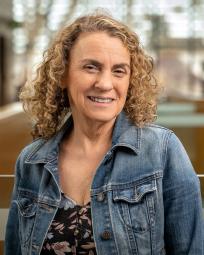


How are young people grappling with climate change? What are the best ways to engage them?
The answer, according to panelists who were part of a May 21 webinar hosted by the Yale Center for Environmental Communication, is to focus on hope rather than despair.
“In my experience, conveying a sense of urgency catalyzes action. Hope sustains that action and gives it longevity,” said Puji Masireddy, a member of the youth advisory board at Action for Climate Emergency (ACE), a Massachusetts-based nonprofit committed to advancing clean energy, stopping fossil fuel reliance, and mobilizing young voters.
The panel discussion was moderated by Grace Gibson-Snyder, ’26, one of sixteen plaintiffs who won a landmark lawsuit against Montana challenging the state’s failure to consider the effects of greenhouse gas emissions when issuing permits for fossil fuel projects. Montana’s state constitution has a requirement to “maintain and improve a clean and healthful environment.”
In my experience, conveying a sense of urgency catalyzes action. Hope sustains that action and gives it longevity.”
Matthew Ballew, research specialist at the Yale Program on Climate Change Communication (YPCCC) and Stephanie Hanes, a journalist with the Christian Science Monitor’s Climate Generation project were also panelists. Ballew discussed findings from YPCCC’s “ Global Warming’s Six Americas,” which identifies six unique audiences, ranging from “The Alarmed,” who are most concerned about global warming and most motivated to act, to “The Dismissive,” who are largely unengaged. Not surprisingly, Ballew said, the most recent follow-up to the study in 2023 revealed that young Americans — Gen Zers (those born between 1997- 2012) and Millennials (those born between 1981-1996) — are more likely than their older counterparts to be highly concerned about global warming, and are eager for information, least politically polarized, and ready and willing to act. The Alarmed segment, according to a follow up study, has grown significantly, he said.
To reach both The Alarmed and The Disengaged ACE relies on “relevant, relatable social media content” to educate young people around the world, inoculate them against widespread disinformation, engage them in advocacy campaigns, and encourage voting and civic participation, Masireddy said.
Hanes said people under 35 are responding to today’s unprecedented environmental challenges with a newfound sense of agency, resourcefulness, and connection. She conducted interviews in the Arctic, Barbados, Bangladesh, Namibia, Portugal and the U.S. for the Monitor’s “The Climate Generation: Born into Crisis, Building Solutions” series, and found that climate change is driving a global youth revolution. Hanes cited examples of people who are challenging the conventional concept of growth and rejecting over-consumption in favor of sustainability.
“They are seizing on a crisis moment to tackle the inequalities and injustices that have long saddled their nations — crafting a new ethos about consumption, progress, and what it means to have a good life,” she said.
